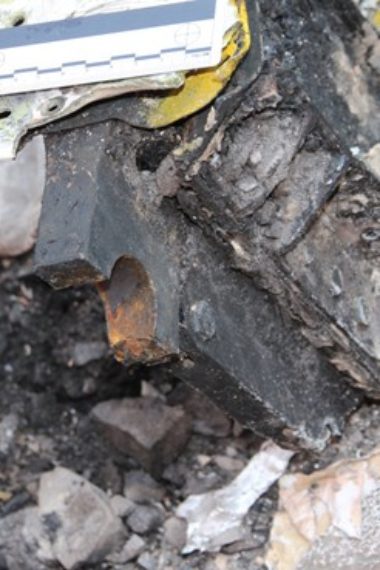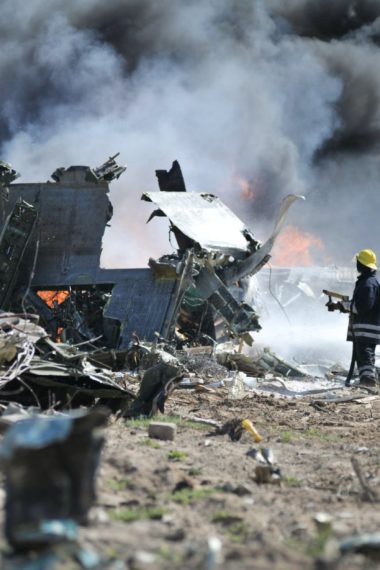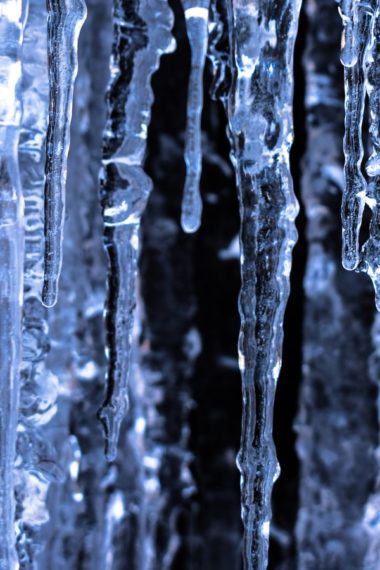Foreign Object Damage
Foreign Object Damage (FOD) is a leading cause of metal failure for components in aviation, aerospace, manufacturing, and other environments susceptible to damage from debris or loose objects.
FOD can cause major structural damage to critical components, costing companies millions of dollars in repair. When substance, debris, or articles alter the designated function of an operating system, safety is compromised for employees, visitors, and passengers. There are protocols in place to conduct self-inspections for removing potential FOD from working areas, but not every instance is predictable.
How do you get ahead of potential failures caused by FOD?
Laser Peening reduces or eliminates the negative effects of FOD by inducing compressive residual stress in areas that experience high fatigue. The unique ability of laser peening to reach a depth unmatched by other technologies allows for more significant fatigue life and damage tolerance improvement. The compressive stress created by laser peening is also more heat resistant. This is an added bonus when dealing with parts surrounded by gas, fuel, and toxins.
Laser peening was designed to enhance the safety of metal parts that organizations count on. Save money and save lives by protecting your parts from unwanted debris.
Real World Incidents
Air France Flight 4590
Cause: Foreign Object Debris
In 2000, an international flight from Paris to New York resulted in a fatal accident at the hands of foreign object damage. The aircraft involved struck debris on the runway during takeoff. The collision with the debris caused the aircraft’s tire to explode, sending additional debris flying underneath the wing and making its way into the landing gear bay. Fuel began to spill after a fuel tank was ruptured, wiring in the landing gear was destroyed, and sparks began to ignite, causing a fire. The aircraft was uncontrollable due to the mangled wiring and disrupted fuel tank just minutes after takeoff. The aircraft ultimately crashed into a hotel and resulted in 113 total casualties.
E-8C JSTARS 93-05967
Cause: Fuel Vent Test Plug
An incident occurred in 2009 when a USAF E-8C-JSTARS 93-0597 surveillance aircraft was refueling. After uplifting nearly 30,000 lbs of fuel, crew members of the aircraft began hearing concerning noises coming from where the fuel tank was located. After an initial inspection, nothing was found. The noises continued and that’s when crew members knew something was wrong. Fuel was spilling through the wing. The aircraft made it back to base safely and an investigation was launched.
Investigators found a fuel vent test plug in one of the fuel tank’s climb relief vents. The overall damage of the fuel tank cost $25 million.
US Airways Flight 1549, “Miracle on the Hudson”
Cause: Flock of geese
An emergency landing was forced in 2009 when an A320 flew into a flock of Candian geese, causing severe damage and a complete loss of thrust to both jet engines. The disturbance occurred about two minutes into the flight. The aircraft would not have been able to make it back to the nearest airport so an emergency landing was performed into the Hudson River and no fatalities occurred.
Despite the complete engine failure from the bird strike, pilot Chesley “Sully” Sullenberger was able to react quickly enough to save the lives of all passengers and crew members onboard.
Western Airlines Swearingen SA226-TC Metro II N158WA
Cause: Screwdriver
Substantial damage was caused during takeoff to the airplane’s propeller and fuselage. The event occurred in 2017 during routine take-off. The pilot of the airplane noticed a peculiar vibration and was able to land before taking full flight. Upon investigation, it was noticed that a propeller blade was fragmented and missing. There was also a puncture hole in the fuselage and a piece of the broken propeller was even found in the cabin. It was determined that a screwdriver used by maintenance was left in the windshield wiper area and became displaced during takeoff. The screwdriver struck the propeller, causing a chain-reaction that led to substantial damage to the aircraft.
FOD Protection
Foreign object damage is a dangerous and expensive failure mechanism that many industries face. Protecting components from FOD is at the forefront of engineers’ plans when developing and designing components that are vulnerable to exposure from materials, rocks, sand pieces, ice, tools, and other supplies. It’s critical to consider damage tolerance improvements.
Laser peening offers engineers the technology required to improve damage tolerance and improve the fatigue life of parts. Laser peening yields beneficial residual stress deep into the metal part for significant fatigue life improvement and crack prevention, protecting parts from FOD.
One of the first laser peening applications to prevent FOD was for engine fan blades on the F101 B-1 Bomber. Laser peening significantly improved fatigue life and safety for crew members and the bomber. It also helped save the Air Force an estimated $1 billion across their fleet.
For the full case study CLICK HERE
Foreign Object Damage Prevention
The overriding mission of laser peening developed by LSP Technologies is to protect metallic components. Talk with our engineering experts to develop an application tailored to defend against FOD.
Our goal is to make your world a safer place.






